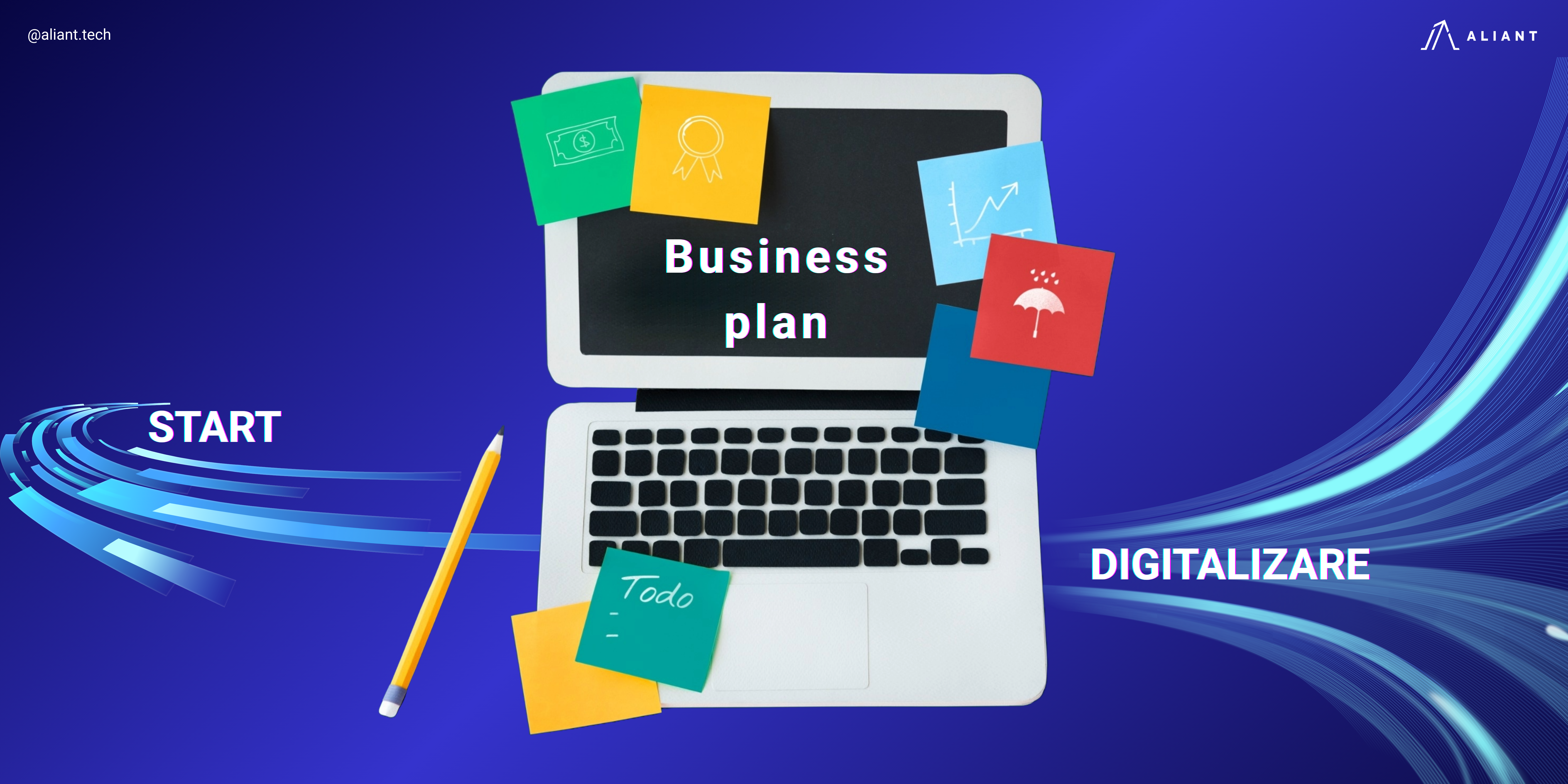From theory to practice: what a digitalization plan looks like!
In previous articles, we have discussed the fact that digitalization is no longer a "nice to have" option — it is a necessity for any SME that wants to remain competitive, efficient and connected to the modern market.
But how do you go from theory to action? What does an achievable digitalization plan look like, within a clear and realistic timeframe?
Aliant offers you a simplified roadmap, in 5 steps, that shows how you can transform digitalization from an abstract concept into a concrete process, with visible results in a relatively short time.
Step 1: Digital diagnosis – understand where you are now
Any transformation process begins with a clear picture of the present. In the first days, a detailed assessment of the current situation is carried out: how internal processes work, which systems are already used, where time, money or information is wasted:
🔹Audit of internal processes (accounting, sales, logistics, customer relations)
🔹Assessment of the current IT infrastructure
🔹Identification of the real needs of the team
Aliant offers at this stage a complete digital assessment of the company, analyzing the current degree of digitalization and identifying automation opportunities that can bring a quick and visible impact — whether we are talking about invoicing, customer management, logistics processes or internal communication. Based on this analysis, the Aliant team recommends the most suitable technological solutions for the specifics and needs of each SME.
Step 2: Strategic planning – defines direction
After the diagnosis, a clear strategy is established. Not all processes need to be digitized simultaneously, and a realistic plan starts with prioritization. SMART objectives are established, resources are allocated, and an implementation calendar is outlined.
🔹Defining SMART objectives (measurable, achievable, with a clear deadline)
🔹Prioritizing processes (we start with those with quick impact and low cost)
🔹Establishing internal managers and the implementation calendar
Aliant supports this step through personalized consulting and by proposing the most suitable technological solutions for the company's needs and budget, maintaining a balance between efficiency and costs. The Aliant team helps structure the digitalization plan and choose the appropriate solutions — from management and CRM applications, to billing, inventory or reporting automation, adapted to the pace and objectives of each SME.
Step 3: Pilot implementation – field testing
This is where the visible transformation begins. The first digital solutions — for example, a CRM, an automated invoicing application or an online collaboration platform — are implemented in a pilot department. The goal is to test and validate the solutions in real conditions, with the direct involvement of the team.
🔹Installation and configuration of the software
🔹Training for the team
🔹Testing on a pilot process or department
Aliant takes care of the complete technical implementation, from the installation and configuration of the systems to the training of the team, so that the transition to the new digital solutions is smooth, fluent and without malfunctions. The feedback obtained at this stage is essential and becomes the basis for subsequent optimizations and adjustments, so that digitalization integrates naturally into everyday activity.
Step 4: Optimization and integration – everything must work together
After pilot testing, expansion and interconnection follow. The implemented solutions are adapted to the rest of the company, workflows are optimized, and applications are integrated with each other — for example, CRM with invoicing or the management system with financial reporting.
🔹Process correction and flow adjustment
🔹Connection between applications (CRM – invoicing – inventory – reporting)
🔹Implementation of security and backup measures
Aliant provides continuous technical support and expertise in system integration, so that all digital processes communicate coherently, efficiently, and securely. Through optimizations and the application of best practices, the Aliant team ensures that the implemented solutions operate uniformly, stably, and adapted to the real needs of the company.
Step 5: Evaluation and sustainability – consolidate the results
The last step of the digitalization plan is to analyze the results and determine the direction for the future. The initial objectives are evaluated, the impact is measured (time saved, costs reduced, productivity increased) and new objectives are defined for the next period.
🔹Measuring the impact (time saved, costs reduced, customer satisfaction)
🔹Documenting the new processes
🔹Plan for expanding digitalization (additional automation, AI, advanced analytics, etc.)
Aliant remains your trusted long-term partner, not just a technology provider. The team provides maintenance, constant support and strategic consulting so that the digitalization process continues to evolve over time, adapting to the changing needs and objectives of your company.
Digitalization doesn't happen overnight, but with a structured approach and an experienced partner, it can become a clear, efficient, and measurable process. With Aliant, you can move from theory to practice in digitalization — laying the foundation for a more agile, smarter, and future-ready business.
Request a free digital assessment with the Aliant team și and discover which solutions can accelerate your business transformation.
👉 Contact us now and start your digitalization plan!




Comments